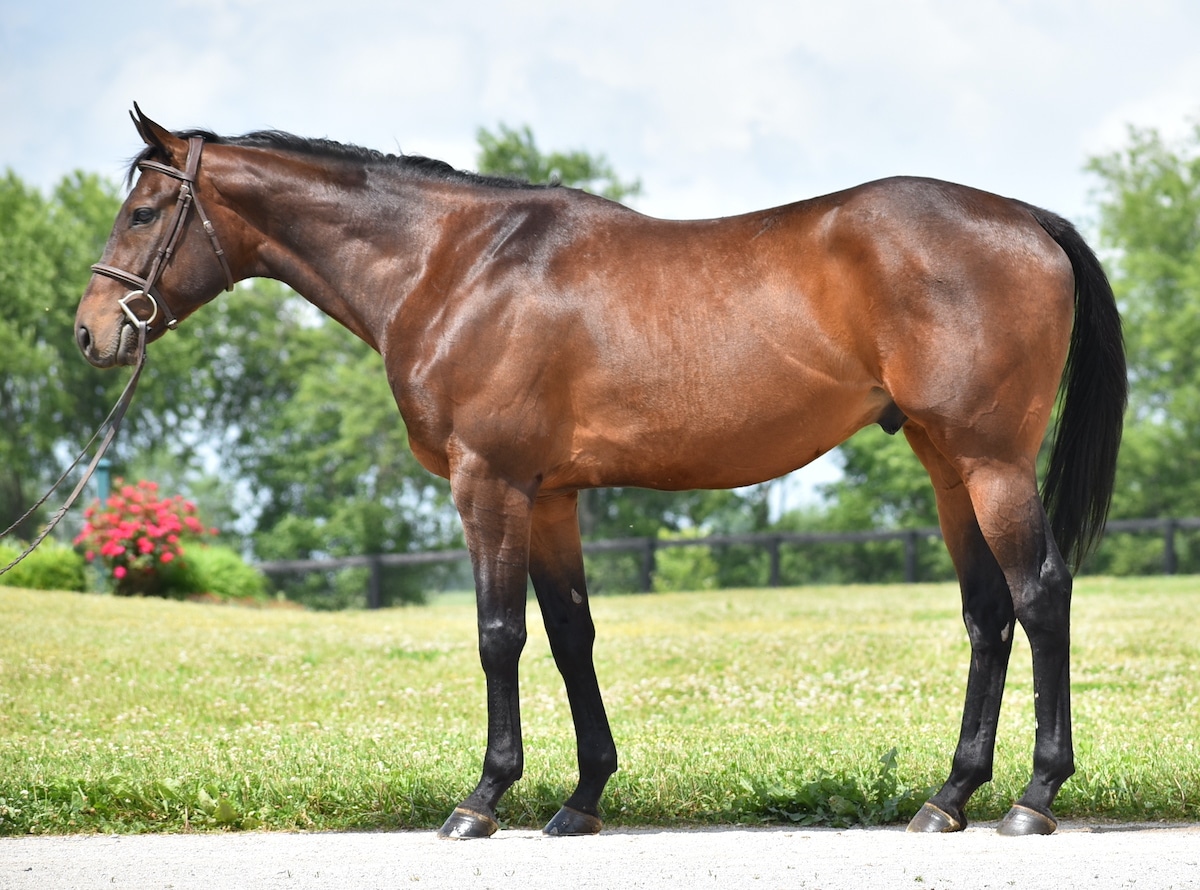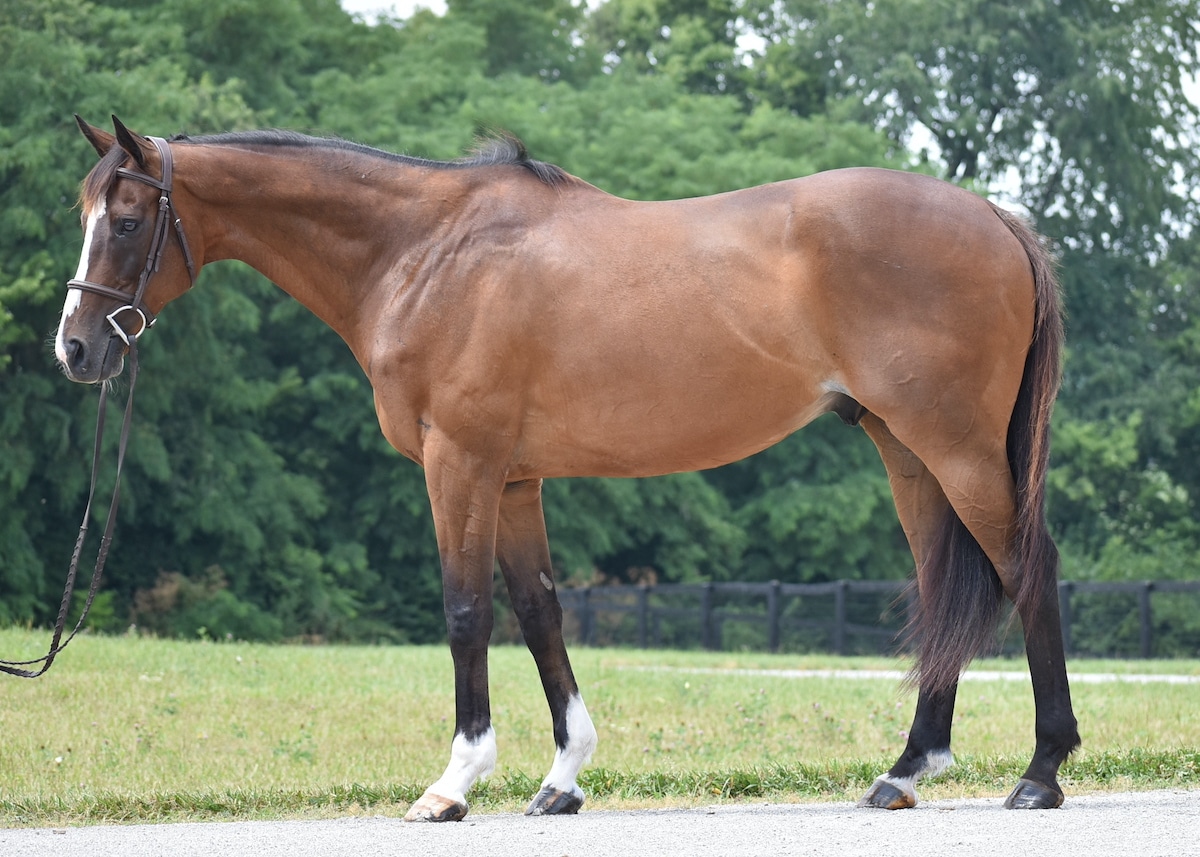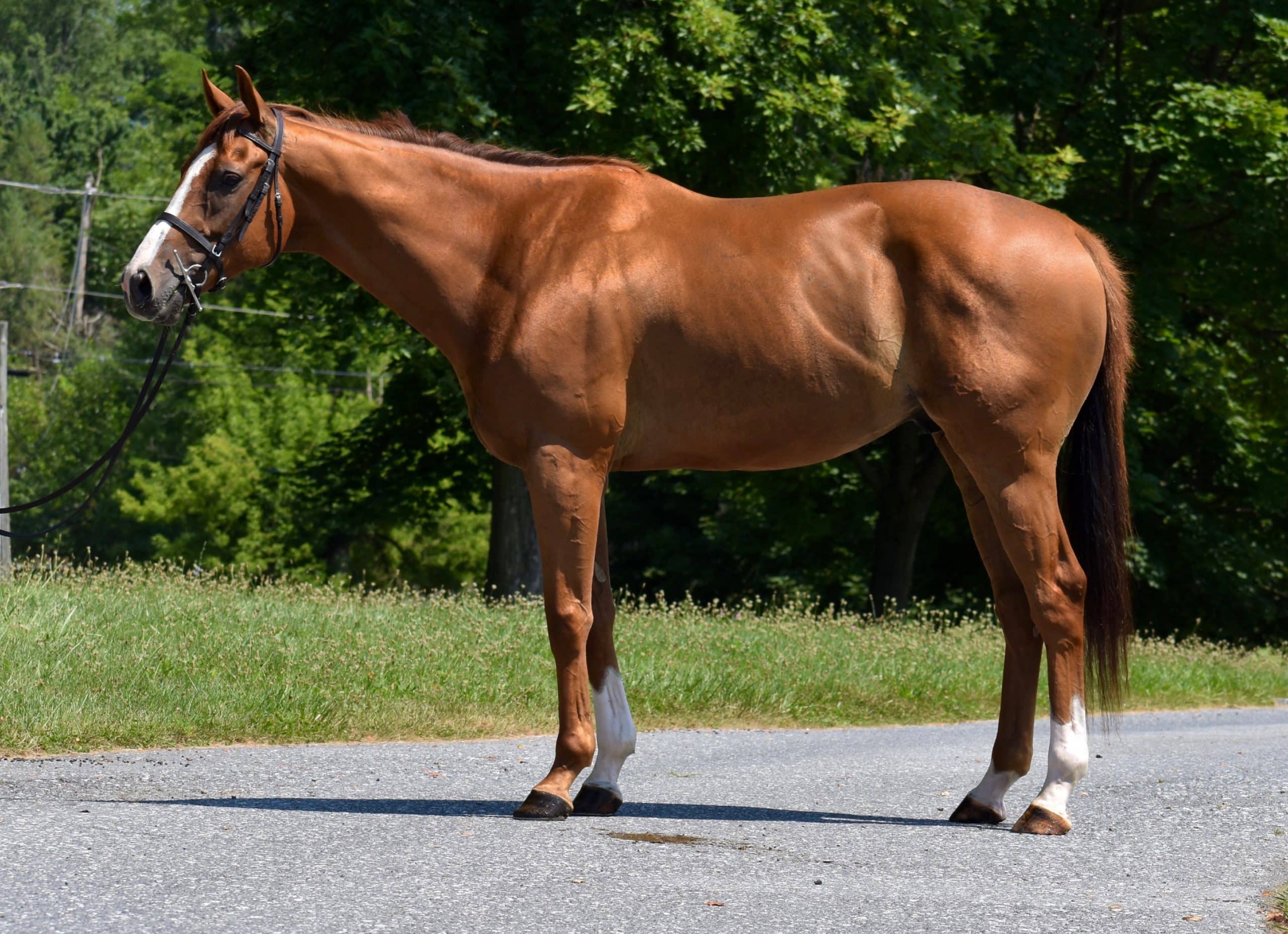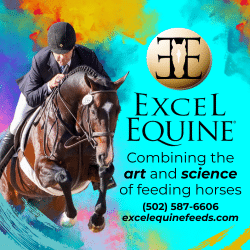Social media has enabled potential OTTB owners to review a large number of retiring Thoroughbred racehorse listings at any time. Newcomers to the breed might find it challenging to consider a prospect right off the track and decide if it’s a match for their desired purpose.
In this column veteran Thoroughbred Makeover trainers share their thoughts about assessing and selecting prospects based only on conformation photos. In honor of 2021’s “Mega-Makeover,” we’re sharing the insights from each competition year from the same discipline.
Our Trainers
■ Raechel Ramsey, 2020 Ranch Work winner with Aussie Prayer
Ramsey grew up riding cutting horses but also fed a desire to learn by dabbling in other disciplines including dressage, eventing, barrel racing and hunter/jumpers. In more recent years she’s moved into the ranch riding and reining show pens. To fund her self-described horse addiction, she takes on project horses and develops them into all-around mounts that can tackle everything from cow work and trail riding to dressage and a bit of jumping.
■ Muri Triantafilo, 2021 Ranch Work winner with War Candy
A lifelong rider mostly of stock breeds, Triantafilo grew up competing in rodeo and O-Mok-See (pattern horse racing) with her family in Montana. She started training at age 10, when neighbors brought horses over to her and her sister, a trend that continued while Triantafilo was in college. She took a break to pursue her career as a pilot but got back into horse training to prepare for the 2021 Thoroughbred Makeover.
Choosing a Horse
Raechel Ramsey is a professional based in Dallas, Texas, and Muri Triantafilo is an amateur from Silesia, Montana. Both assess Thoroughbred prospects through a cow horse lens, looking for conformational points that will lend well to stopping hard and rolling back — skills that allow a horse to work a cow successfully. “I prefer a shorter, more compact horse,” says Ramsey. “That kind of build tends to make it a little easier to develop the big stop and rollback you’ll need when working cows.”
Triantafilo agrees, and likes to see how that conformation plays out in movement. “It’s hard to see much with a picture about the way a horse moves, but just watching a horse walk can tell you quite a bit,” she says. “Pay attention to how far they reach under with their back legs: The more range of motion, the easier it will be for them to get under themselves and stay balanced when working cattle and coming to a hard stop.”
Ramsey has sourced her recent Thoroughbreds through New Vocations Racehorse Adoption Program. “They do a fantastic job of screening every horse, plus any necessary rehabilitation, and have a great description of their ability and temperament.” While Ramsey lives far from New Vocations’ Lexington, Kentucky, headquarters, she trusts the organization’s assessments of horses to adopt confidently.
Triantafilo’s recent foray into Thoroughbreds was through a gift from a friend — a mare she ended up taking to the Makeover. “Because she was a gift, I didn’t have an option in choosing conformation — but what War Candy lacked in ‘cow horse’ conformation, she made up for with trainability and heart. In the end that’s all that really matters — taking the time to train them and get them to understand what you’re asking. She’s willing to try anything I ask of her, as long as I’m patient.”
Meet the Prospects
Our model horses all come from New Vocations Racehorse Adoption Program, which celebrates its 30th anniversary this year. Racing connections donate horses to New Vocations at the end of the horses’ racing careers, either directly or through programs such as NYTHA’s Take the Lead or Maryland’s Beyond the Wire. Connections complete and submit a horse donation form and send all available veterinary records and information for New Vocations to determine if the horse is a good fit for its program.
New Vocations prides itself on its ability to provide long- and short-term veterinarian-supervised rehabilitation services for horses after injury or surgery and before they begin their training. This process includes both veterinary evaluation at the time of donation for horses with less robust veterinary histories or those with clinical signs not noted in histories, as well as continued rechecks throughout the veterinarian-prescribed rehab protocol. Once horses return to soundness, they might start basic transitional training when mentally and physically ready.
New Vocations relies on donations, fundraisers, grants and other financial gifts to carry out its mission to rehab, retrain and rehome retiring racehorses.
While these three horses might no longer be available for adoption when this issue hits your mailbox, New Vocations has plenty of prospects looking for their next partners.

Horse 1: Big Mel (Quality Road — Emma Darling, Hennessy)

Horse 2: Projected (GB) (Showcasing [GB] — Deliberate [GB], King’s Best)

Horse 3: True Shipman (Midshipman — True Wishes, Marquetry)
Ramsey’s Picks
Horse 2 This horse has a nice hip under him and is very proportional. His shorter back and bigger hip will allow him to get his legs under him to track and move with the cows. His shoulder is a little more on the upright side, which gives him a little bit of a shorter neck line. He looks like he will muscle up with consistent work, and with the cute, inquisitive look on his face, he looks like a fun one to work with.
Horse 1 I like the shoulder angle and deep, wide girth on this guy. He is slightly higher in the hip than withers and might struggle to get underneath himself a little until he grows and evens out a little. This is another one that looks like he will muscle up and be able to carry himself around a reining pattern.
Horse 3 This guy has a nice uphill build to him, with his front legs standing straight under him. While he might not be my first pick for ranch or cow work, after developing the hind end I feel that he would probably make a nice dressage horse with that uphill build. He has a kind, sweet eye and good-looking feet under him.
Triantafilo’s Picks
Horse 3 This gelding has a nice hip: He is fairly wide from the stifle through the point of the hip. He has a deep flank, almost as deep as his girth, which will aid him in being stronger and more balanced in the stop. He has shorter cannon bones in the rear, with lower hocks making it easier for him to get down low and stay quick on his feet. This horse doesn’t have quite as sloping of a shoulder angle as the others, which may make it harder for him to free up his front legs for quick turns. He would have to compensate by building more strength in his hind end to aid that movement.
Horse 1 This horse is my second pick because of the angle of his shoulder: That nice slope will aid in opening up the movement of the front legs. This can help with sharp turns and getting low to turn cattle. This horse isn’t quite as deep in the flank, making it harder to naturally hold a stop. He looks like he would benefit from some hill work and transitions to help build up muscles necessary to support his hind end.
Horse 2 I suspect that higher cut in the flank will make it harder to hold a stop. He also appears to have a longer cannon bone, making him a little less athletic for the sharp, quick movements necessary for working and turning cattle. He does have a nice hip and great shoulders, but his long legs may be his detriment when getting those hard stops, as well as cutting back and forth. I feel he could do well in other disciplines.
This article was originally published in the Fall 2022 issue of Off-Track Thoroughbred Magazine, the only publication dedicated to the Thoroughbred ex-racehorse in second careers. Want four information-packed issues a year delivered to your door or your favorite digital device? Subscribe now!

